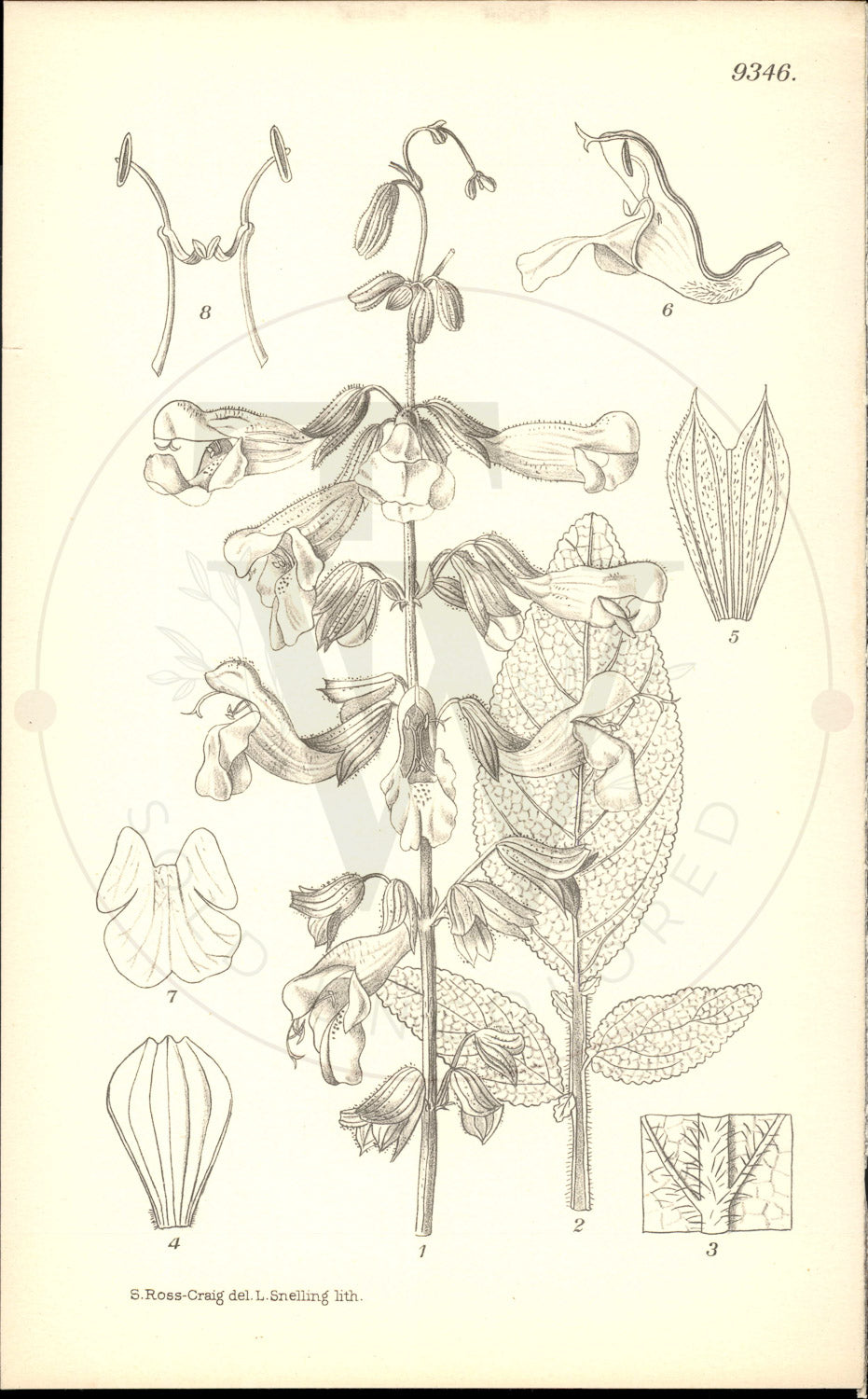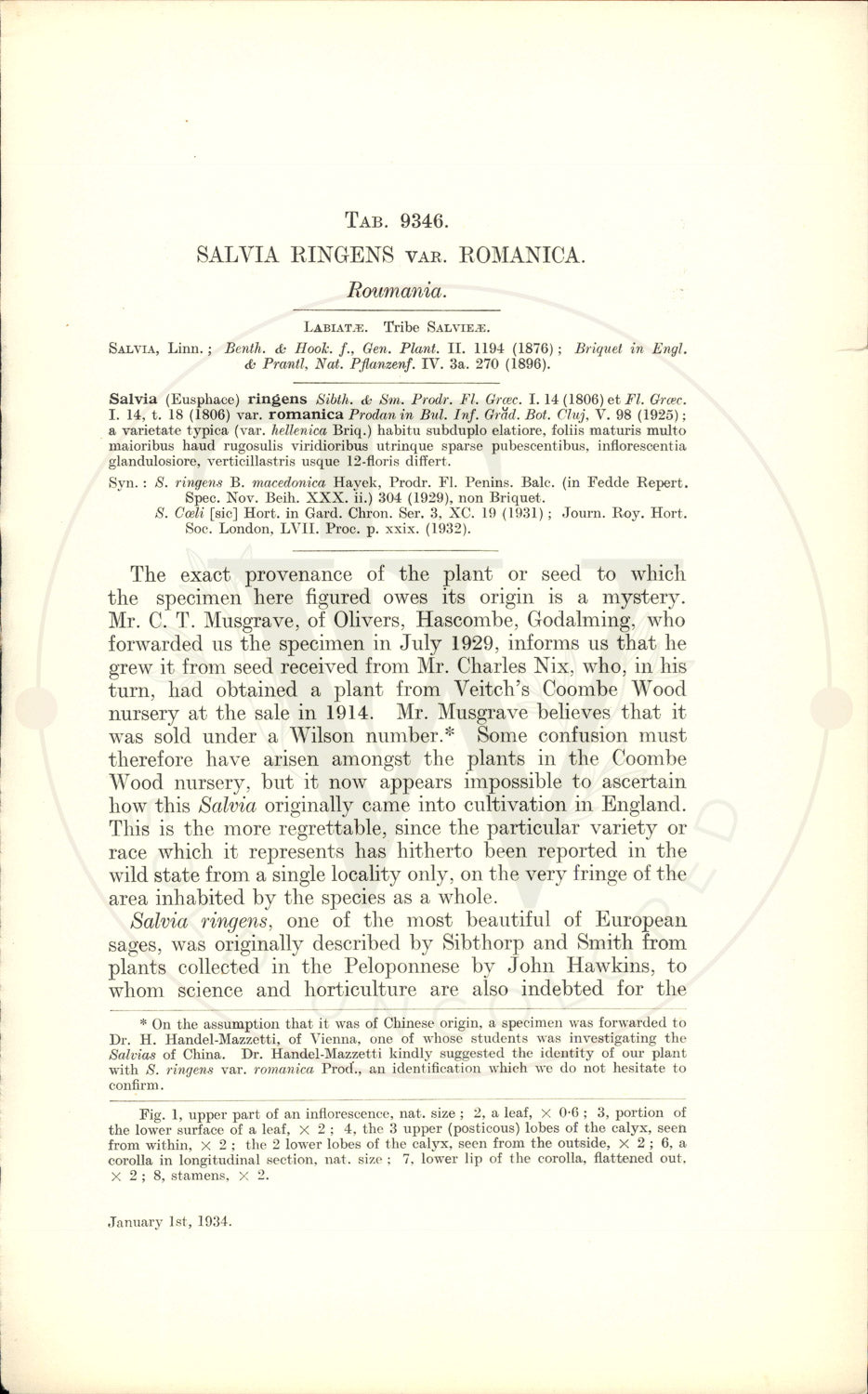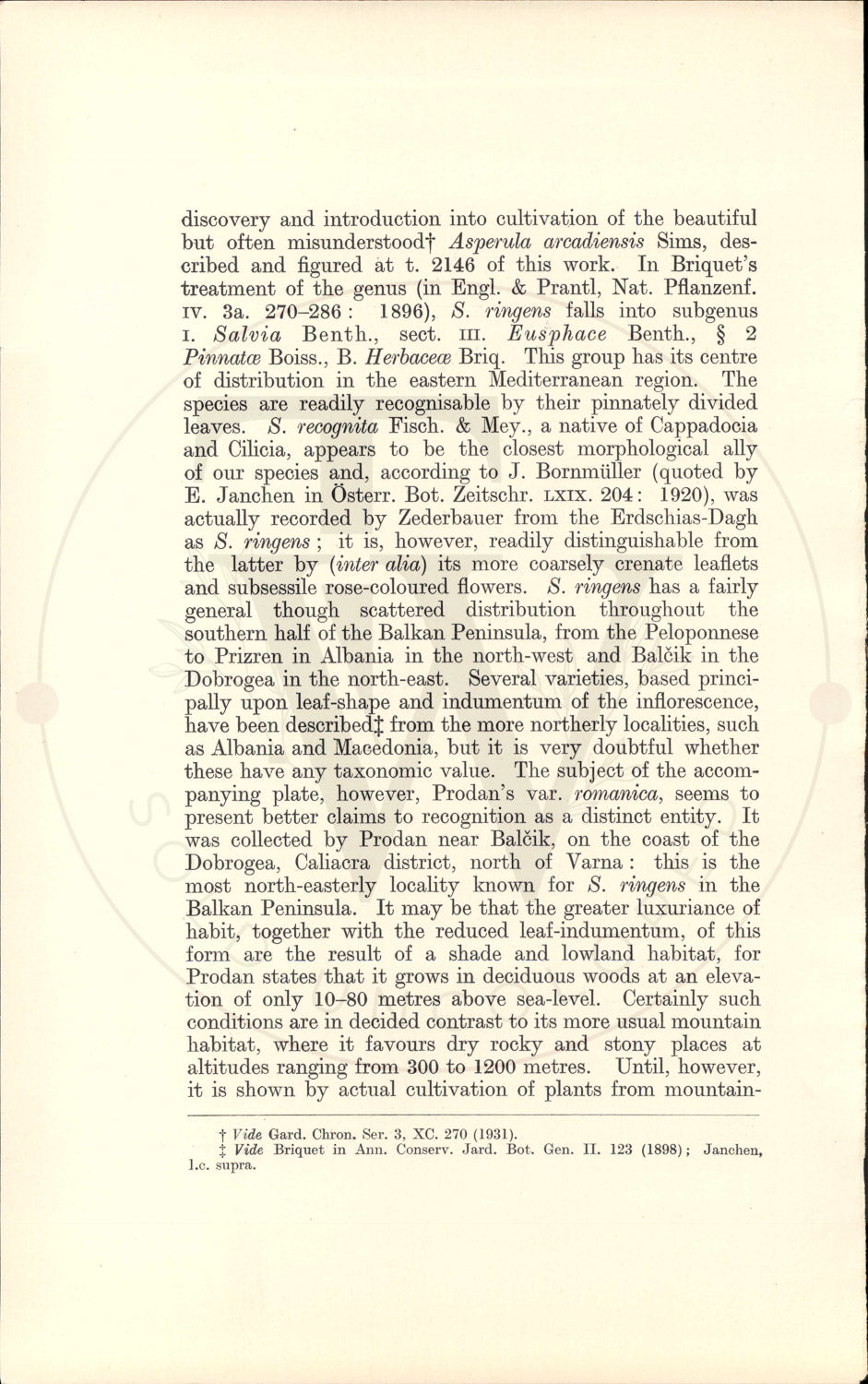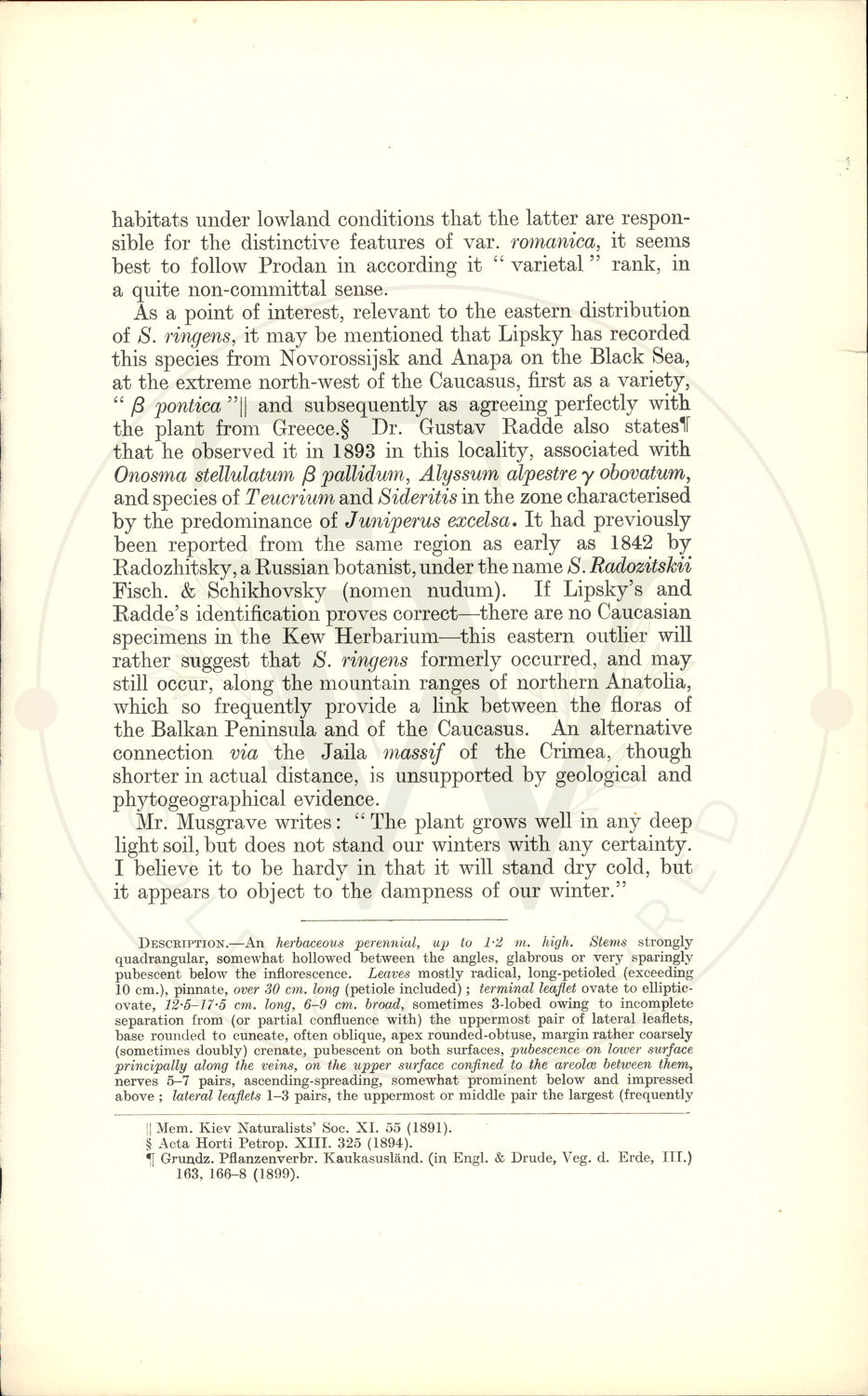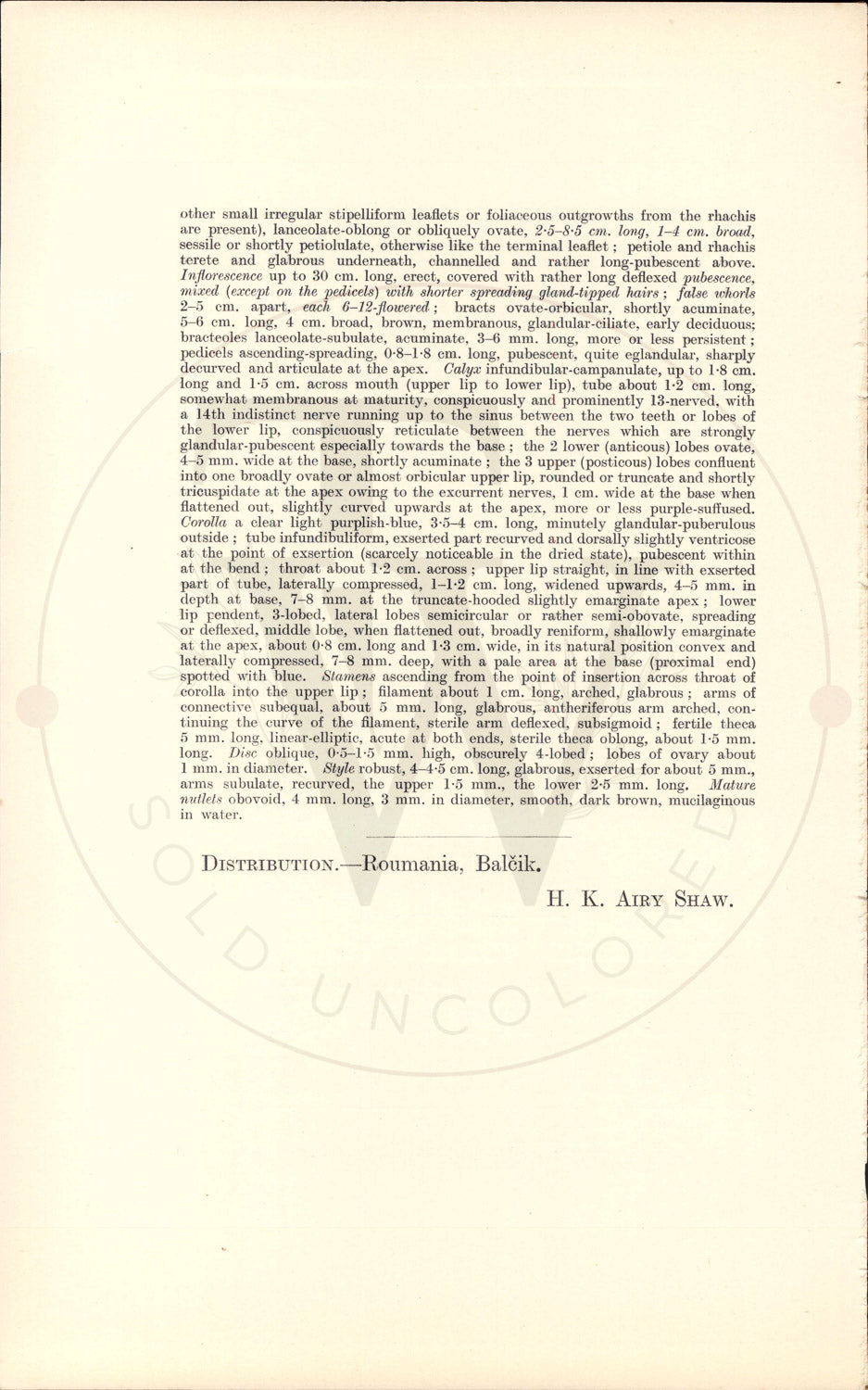Curtis Botanical Magazine
Plate 9346 - Salvia ringens
Plate 9346 - Salvia ringens
Couldn't load pickup availability
Curtis's Botanical Magazine - Plate 9346
Salvia ringens
Family: LABIATE • Tribe: SALVIEAE • Publication Date: January 1st, 1934
Distribution: South-eastern Tibet and northern Burma. • Tab Author: J. HUTCHINSON.
Botanical Description
The exact provenance of the plant or seed to which the specimen here figured owes its origin is a mystery. Mr. C. T. Musgrave, of Olivers, Hascombe, Godalming, who forwarded us the specimen in July 1929, informs us that he grew it from seed received from Mr. Charles Nix, who, in his turn, had obtained a plant from Veitch's Coombe Wood nursery at the sale in 1914. Mr. Musgrave believes that it was sold under a Wilson number.* Some confusion must therefore have arisen amongst the plants in the Coombe Wood nursery, but it now appears impossible to ascertain how this Salvia originally came into cultivation in England. This is the more regrettable, since the particular variety or race which it represents has hitherto been reported in the wild state from a single locality only, on the very fringe of the area inhabited by the species as a whole. Salvia ringens, one of the most beautiful of European sages, was originally described by Sibthorp and Smith from plants collected in the Peloponnese by John Hawkins, to whom science and horticulture are also indebted for the *On the assumption that it was of Chinese origin, a specimen was forwarded to Dr. H. Handel-Mazzetti, of Vienna, one of whose students was investigating the Salvias of China. Dr. Handel-Mazzetti kindly suggested the identity of our plant with S. ringens var. romanica Prod., an identification which we do not hesitate to.
Synonyms
Syn. S. ringens B. macedonica Hayek, Prodr. Fl. Penins. Balc. (in Fedde Repert. Spec. Nov. Beih. XXX. ii.) 304 (1929), non Briquet. S. Coeli [sic] Hort. in Gard. Chron. Ser. 3, XC. 19 (1931); Journ. Roy. Hort. Soc. London, LVII. Proc. p. xxix. (1932).
About This Print
Original black and white uncolored botanical print from Curtis's Botanical Magazine (established 1787). This 9000s series print is from unissued publisher stock, never hand-colored, representing the authentic plate as it appeared in the magazine. Edited by Sir Arthur William Hill for The Royal Horticultural Society, London.
Share
